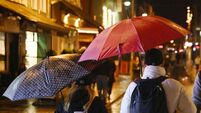A long road to recovery for the people of the Philippines

Some even suggest the clean-up from the 200mph typhoon will be the Philippines’ biggest reconstruction job since the Second World War.
More than 13m people were affected including 5.4m children, according to the UN. There’s a discussion emerging though that we as a global community are now all responsible for adverse weather related disasters. Furthermore, an uncoordinated government response and aid effort on the Pacific islands has clearly inhibited relief efforts.
















